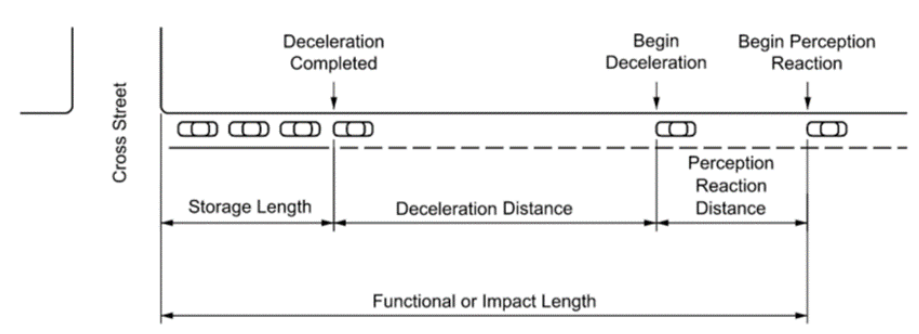13.2.2 Intersection Functional Area
An intersection is defined as both its functional and physical areas, as illustrated in
. The functional area extends both upstream and downstream from the physical intersection area and include any auxiliary lanes and their associated channelization. The functional area on the approach to an intersection or driveway is comprised of the following three fundamental components:
- perception-reaction distance,
- deceleration distance, and
- storage length as illustrated in .
The perception reaction distance represents the distance traveled while a driver recognizes the upcoming turn lane and prepares for a maneuver. The distance covered during the perception-reaction period is contingent on factors such as vehicle speed, driver attributes, and driver familiarity with the location. Refer to
for additional information on perception reaction distance and the time values used for each context classification.
In cases where there are dedicated left or right-turn lanes, the deceleration distance encompasses the space required for both deceleration and lane change. In the absence of turn lanes, it entails coming to a smooth stop. The storage length should be sufficient to accommodate the longest queue expected for the majority of the time. Ideally,
driveways should not be situated within the functional area of an intersection,
as demonstrated in
, or within the influence region of an adjacent driveway.
Figure 13-2: Physical and Functional Area of an Intersection
Source: AASHTO’s A Policy on Geometric Design of Highways and Streets

Figure 13-3: Elements of the Functional Area of an Intersection
Source: AASHTO’s A Policy on Geometric Design of Highways and Streets